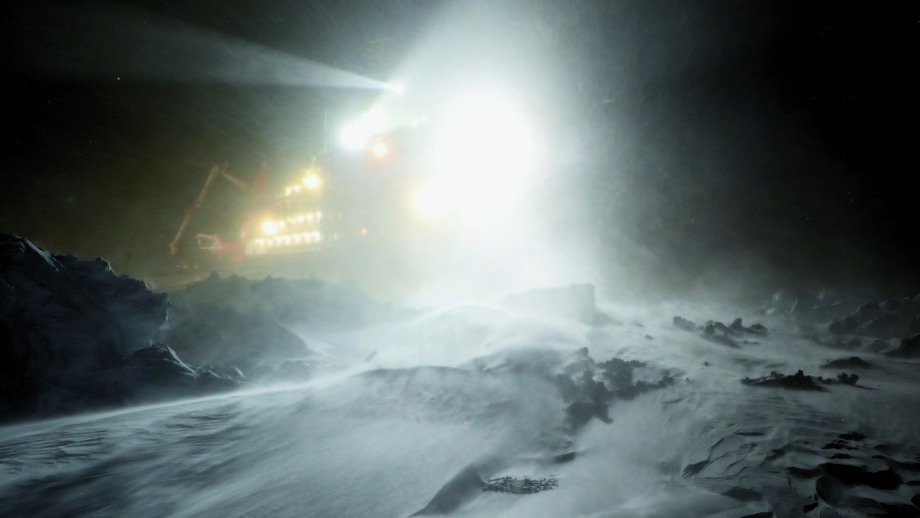Wang's lab discovers that Arctic sea salt aerosols are underestimated, improving modeling

Atmospheric scientists, led by Jian Wang, have discovered that wind-blown snow in the central Arctic produces abundant fine sea salt aerosols, resulting in increased seasonal surface warming. 
The Arctic is a concerning outlier when it comes to global warming trends. It warms almost four times faster than the global average, and the role of aerosols in this warming is significant. Scientists have known for a long time that pollutants from other regions can build up in the Arctic atmosphere. This leads to a change in atmospheric chemistry, which absorbs sunlight and has an impact on local weather patterns, resulting in localized warming that melts ice and snow. While sea salt particles are the primary aerosol mass concentration, the mechanisms that produce them and their impact on the Arctic climate have yet to be fully understood.
Atmospheric scientists led by Jian Wang, director of the Center for Aerosol Science and Engineering and a professor of energy, environmental and chemical engineering at the McKelvey School of Engineering at Washington University in St. Louis, investigated the production and impact of sea salt aerosols on Arctic warming. Their results revealed abundant fine sea salt aerosol production from blowing snow in the central Arctic, increasing particle concentration and cloud formation.
“Over the past few decades, scientists have identified ‘Arctic haze’ as the primary source of aerosols in the Arctic during winter and spring. This haze results from the long-range transport of pollutants,” said Xianda Gong, first author on the study and a former postdoctoral researcher in Wang’s lab. “However, our study reveals that local blowing snow, which produces sea salt particles, contributes a more substantial fraction to the total aerosol population in the central Arctic.”
Wang’s team analyzed data collected by the Multidisciplinary Drifting Observatory for the Study of Arctic Climate (MOSAiC). Such observations are difficult to obtain — the MOSAiC expedition entailed international collaboration and freezing an icebreaker into the central Arctic ice pack to drift with the sea ice for an entire year — but essential to understanding the full picture of atmospheric conditions in the Arctic.
“The MOSAiC expedition let us observe how aerosols and clouds evolve over a year and led to this discovery,” Wang said. “Sea salt particles in the Arctic atmosphere aren’t surprising, since there are ocean waves breaking that will generate sea salt aerosols. But we expect those particles from the ocean to be pretty large and not very abundant.
“We found sea salt particles that were much smaller and in higher concentration than expected when there was blowing snow under strong wind conditions,” Wang said.
In the central Arctic, the coldest winter nights are the clearest, when heat from Earth can escape into space unimpeded. Under a cozy blanket of clouds, though, long-wave radiation gets trapped and contributes to warming, so any process that leads to increased cloud formation and lingering cloudiness also boosts surface temperatures. Small aerosol particles, including those fine sea salt aerosols produced by blowing snow that Wang’s team discovered, turn out to be very good for cloud formation.
“These sea salt particles can act as cloud condensation nuclei, leading to cloud formation,” Gong said. “Considering the absence of sunlight in the winter and spring Arctic, these clouds can trap surface long-wave radiation, thereby significantly warming the Arctic surface.”
Though scientists had not observed this phenomenon before, fine sea salt aerosols from blowing snow have always been part of the Arctic climate system. With this observational confirmation and systematic study, which revealed that sea salt particles produced from blowing snow account for about 30% of total aerosol particles, climate models can now be updated to include the effects of these fine particles.
“Model simulations that don’t include fine sea salt aerosols from blowing snow underestimate aerosol population in the Arctic,” Wang said. “Blowing snow happens regardless of human warming, but we need to include it in our models to better reproduce the current aerosol populations in the Arctic and to project future Arctic aerosol and climate conditions.”
The findings of this study suggest that model simulations of the Arctic atmosphere must include fine sea salt aerosols from blowing snow in order to accurately represent the aerosol population in the region. This is an encouraging development, as it means that scientists now have a better understanding of the Arctic atmosphere and can use this knowledge to develop more accurate models and predictions. With this new information, researchers can continue to work towards a more comprehensive understanding of the Arctic climate and its effects on the global environment.

 How to resolve AdBlock issue?
How to resolve AdBlock issue?